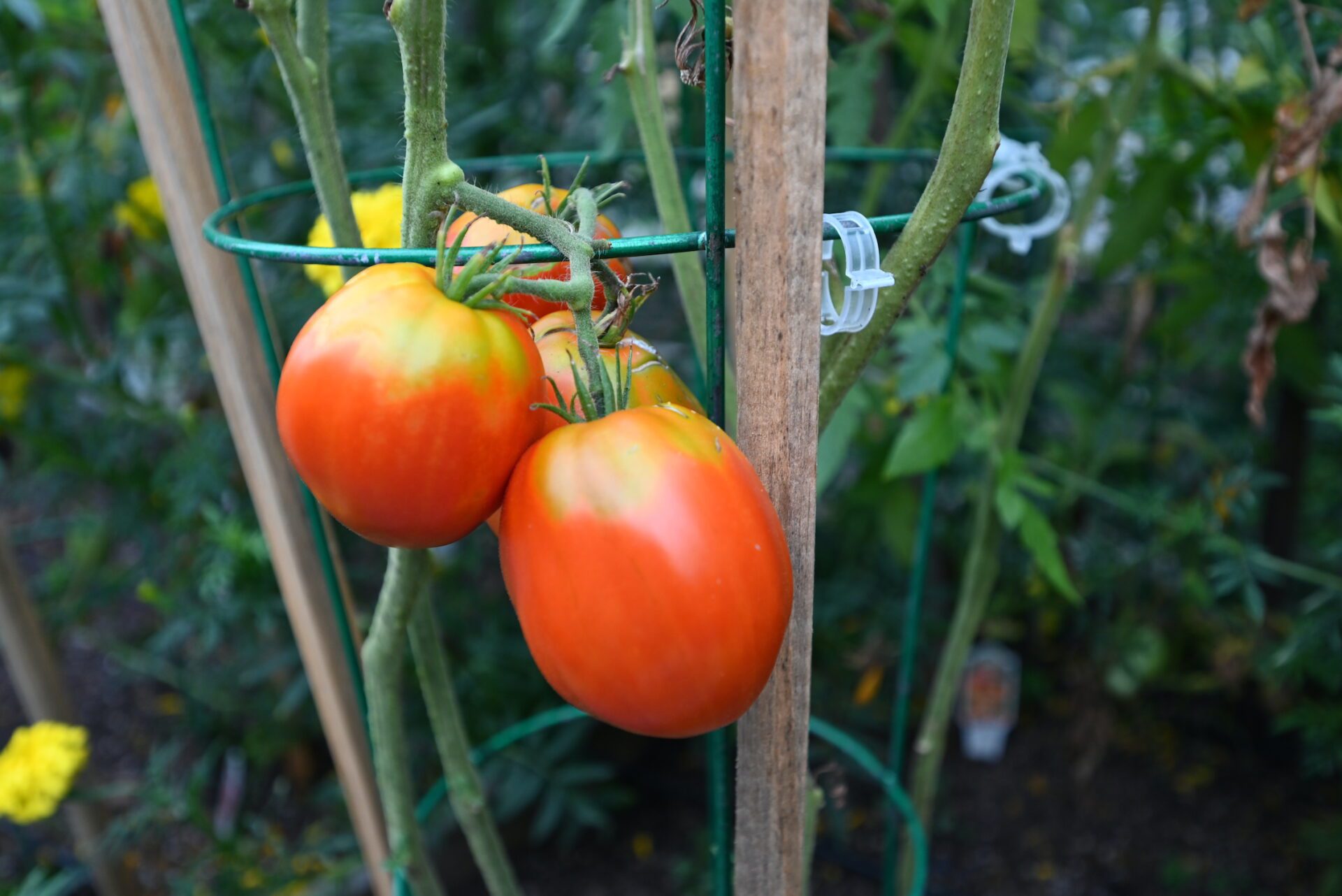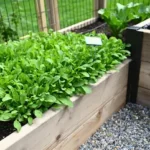
[et_pb_section fb_built=”1″ admin_label=”section” _builder_version=”4.16″ da_disable_devices=”off|off|off” global_colors_info=”{}” da_is_popup=”off” da_exit_intent=”off” da_has_close=”on” da_alt_close=”off” da_dark_close=”off” da_not_modal=”on” da_is_singular=”off” da_with_loader=”off” da_has_shadow=”on”][et_pb_row admin_label=”row” _builder_version=”4.16″ background_size=”initial” background_position=”top_left” background_repeat=”repeat” global_colors_info=”{}”][et_pb_column type=”4_4″ _builder_version=”4.16″ custom_padding=”|||” global_colors_info=”{}” custom_padding__hover=”|||”][et_pb_text _builder_version=”4.27.0″ _module_preset=”default” text_text_color=”#000000″ link_font=”|700|||on|||#000000|” link_text_color=”#000000″ hover_enabled=”0″ global_colors_info=”{}” header_2_font_size_last_edited=”on|phone” header_2_font_size_phone=”24px” header_2_line_height=”1.4em” sticky_enabled=”0″]
Introduction
When building an edible garden, it’s important to develop a cohesive system to achieve maximum long-term success. Unfortunately, while it’s easy to find an overwhelming amount of information online, most people absorb scattered bits and pieces of gardening knowledge that don’t necessarily work well together. In a cohesive system, every decision – crop variety, plant spacing, and structural supports – work together to promote healthy plant growth and a rewarding gardening experience.
[/et_pb_text][et_pb_text _builder_version=”4.25.1″ _module_preset=”default” text_text_color=”#000000″ link_font=”|700|||on|||#000000|” link_text_color=”#000000″ global_colors_info=”{}” header_2_line_height=”1.4em” header_2_font_size_phone=”24px” header_2_font_size_last_edited=”on|phone”]
Choosing Tomato Varieties
To develop a system that works, first choose which varieties of plants you want to grow. Each variety has different growth patterns, spacing needs, and support needs. Indeterminate tomatoes are popular for their wide variety of fruit shapes and flavors, and longer growing season. However, they also grow vigorously and indefinitely – requiring sturdy supports and proper pruning to thrive.
At Backyard Eats, we plant indeterminate tomatoes that need at least 4 square feet of growing space per mature plant in order to provide a wider variety of growing options. In our system, this affects how we create summer planting plans for clients before spring planting begins. To maximize garden space, harvest, and plant health, we train tomato plants to grow as vertically as possible. This requires 8-9 foot cages that can withstand the height of a tall plant covered in fruit.
Determine tomatoes, on the other hand, only grow to a maximum height (typically 3-4 ft). Therefore, standard tomato cages are built to support smaller plants, meaning that indeterminate varieties will outgrow them – leading to tangled vines, broken branches, and potentially tipping over the cage itself.
To prevent these problems and provide an appropriate trellis, we’ve developed what we call a “tomato tower”. This trellis consists of two standard tomato cages stacked on top of each other. Although tomatoes can be considered vines, we find they produce significantly better on a cage than a wall-style trellis. The main advantage of this “tomato tower” is its height, which will allow it to support indeterminate tomato varieties as they grow without toppling over or crowding branches within a small space. Combined with proper pruning techniques, you can expect trellising to increase your plant health and produce harvest.
[/et_pb_text][et_pb_image src=”https://backyard-eats.com/wp-content/uploads/2022/05/Trellises_Hero_1920x1080.jpg” title_text=”Trellises_Hero_1920x1080″ _builder_version=”4.25.1″ _module_preset=”default” global_colors_info=”{}”][/et_pb_image][et_pb_text _builder_version=”4.25.1″ _module_preset=”default” text_text_color=”#000000″ link_font=”|700|||on|||#000000|” link_text_color=”#000000″ global_colors_info=”{}” header_2_line_height=”1.4em” header_2_font_size_phone=”24px” header_2_font_size_last_edited=”on|phone”]
Benefits of Trellis Training
Trellis training offers several benefits in a raised bed garden: primarily maximizing space efficiency by allowing plants to grow vertically. Using trellis for vertical growing is ideal for conserving valuable garden space in smaller areas or raised bed gardens, leaving more soil space for shorter plants.
Additionally, vertical growth promotes better airflow and sunlight exposure, reducing the risk of disease and improving overall plant health. To guide vines along trellises, gently tie or train them to the support structure as they grow. Regularly check the vines and adjust their position as needed to encourage upward growth and prevent tangling or overcrowding. Using clips or soft ties ensures secure support without damaging delicate stems or foliage.
In Backyard Eats gardens, trellising can be part of the permanent infrastructure, like a wall-style trellises on the north side of the garden, or a standalone structure like an obelisk, or even a temporary support like a tomato cage. Cage-type trellises offer sturdy support and are particularly suitable for heavy-fruited crops like tomatoes or peppers. These trellises consist of interconnected metal cages that provide stability and support for sprawling plants, preventing them from collapsing under the weight of fruit.
[/et_pb_text][et_pb_text _builder_version=”4.25.1″ _module_preset=”default” text_text_color=”#000000″ link_font=”|700|||on|||#000000|” link_text_color=”#000000″ global_colors_info=”{}” header_2_line_height=”1.4em” header_2_font_size_phone=”24px” header_2_font_size_last_edited=”on|phone”]
Tomato Pruning Strategies
In addition to trellis training, pruning is also essential for maintaining the health and productivity of your edible garden. By removing dead, diseased, or damaged branches, you promote new growth and prevent pest and disease issues. Pruning also improves the plant’s structure, maximizes your harvest, and enhances the plant’s appearance and manageability.
Unpruned plants with crowded leaves often harbor excess moisture after a heavy rainstorm or top-watering with a watering can or hose. Many pests and diseases thrive in these wet environments. By pruning excess or diseased tomato branches, you will open up the plant’s structure to air and light and reduce potential habitats for issues like fungal diseases.
Removing diseased plant parts will stop the spread of disease and help the plant focus its energy on growth and fruiting. Without pruning, disease will spread and it will be hard to untangle branches or view when a problem arises.
It’s important to prune excess growth strategically to concentrate energy on producing bigger, tastier, and healthier fruit, especially for young plants. However, be careful not to over-prune, as this can shock the plant. Pruning also helps train your plants to trellis structures and prevents vines from interfering with each other. Understanding where and how fruit production happens on each plant will help you make the right pruning decisions.
[/et_pb_text][et_pb_image src=”https://backyard-eats.com/wp-content/uploads/2024/05/Copy-of-DSC_2367.jpg” title_text=”Copy of DSC_2367″ _builder_version=”4.25.1″ _module_preset=”default” global_colors_info=”{}”][/et_pb_image][et_pb_text _builder_version=”4.25.1″ _module_preset=”default” text_text_color=”#000000″ global_colors_info=”{}” link_font=”|700|||on|||#000000|” link_text_color=”#000000″ header_2_line_height=”1.4em” header_2_font_size_phone=”24px” header_2_font_size_last_edited=”on|phone”]
Conclusion
As you embark on your gardening journey, remember that the benefits of trellis training extend beyond initial setup—they require consistent upkeep. Regular maintenance involves checking vines, adjusting their positions, and securing them with ties and clips as needed. This ongoing care not only ensures optimal growth by enhancing airflow and sunlight exposure but also facilitates easier harvesting, making your gardening experience more enjoyable. With a well-maintained trellis system and proper pruning techniques, you can maximize space, minimize disease risks, and harvest abundant tomatoes in your Backyard Eats garden. Happy gardening!
[/et_pb_text][/et_pb_column][/et_pb_row][/et_pb_section]






